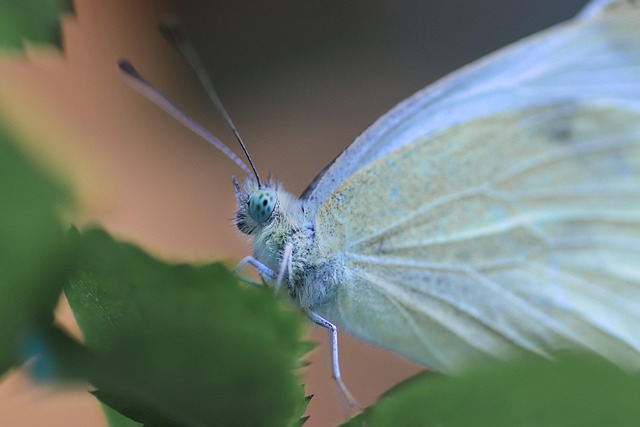Pest infestation inspection services that include moisture assessment are crucial for maintaining dry, pest-free environments in homes and commercial spaces. Professionals use specialized tools to detect hidden moisture issues, addressing them through tailored solutions and proactive mitigation. Key focus areas include water sources, drainage systems, termite breeding signs, rodent activity, and bed bug presence. Immediate action after identifying moisture issues involves repairing leaks and eliminating standing water, with regular maintenance routines recommended for early detection of infestations like termites, rodents, bed bugs, or ants.
In the battle against pests, understanding moisture as a magnet for these intruders is key. Moisture-related issues can create ideal environments for various pests, from termites and rodents to bed bugs and ants, leading to costly damage. Professional pest inspection services play a vital role in identifying these problem areas through comprehensive pest infestation inspection services. This article guides you through the process, offering insights into termite inspection services, rodent infestation inspection, bed bug inspection, and ant infestation inspection, ensuring your space remains pest-free with effective pest detection services and home pest inspection strategies.
Understanding Moisture as a Pest Magnet
Moisture is often an overlooked yet powerful magnet for pests, particularly in homes and commercial spaces. It plays a significant role in attracting various insects and rodents that thrive in humid environments. Understanding moisture as a pest attractant is crucial for anyone seeking to prevent or mitigate pest infestations. Professionals in pest infestation inspection services recognize that high humidity levels create the perfect conditions for pests like termites, rodents, bed bugs, and ants to proliferate.
A professional pest detection service or home/commercial pest inspection should always include an assessment of moisture levels and potential sources of excess humidity. This is because many pests are not only drawn to water but also leave behind telltale signs of their presence through moist environments. For instance, termite inspections often involve checking for wood damage and moisture issues, as termites are attracted to damp wood. Similarly, bed bug inspections look for bloodstains and moisture on surfaces, as these insects favor warm, humid areas. By addressing moisture problems during a pest inspection, professionals can offer comprehensive solutions, ensuring a dry and pest-free environment.
The Role of Professional Pest Inspection Services in Moisture Assessment
Professional pest inspection services play a pivotal role in moisture assessments, offering expertise and specialized tools to identify conditions that attract pests. These inspections go beyond what an untrained eye might spot, as professionals are equipped to detect subtle signs of moisture issues—a primary breeding ground for various pests. With advanced techniques, they can uncover hidden problems within walls, attics, and crawl spaces, which are often the silent culprits behind pest infestations such as termites, rodents, bed bugs, and ants.
Engaging the services of professional pest inspectors is particularly crucial for home and commercial properties alike. They provide detailed reports outlining potential risks and offer tailored solutions to mitigate them. By addressing moisture problems proactively, these experts help prevent costly repairs and protect against widespread pest infestations that could impact health and safety.
Key Areas to Focus During Moisture-Related Pest Infestation Inspections
During moisture-related pest infestation inspections, several key areas warrant focused attention to effectively identify and mitigate potential issues. Professional pest inspection services should commence with a thorough examination of water sources and drainage systems. Leaks, stagnant water, and inadequate drainage can create ideal environments for pest breeding, particularly termites, rodents, and ants. Inspecting plumbing fixtures, roofs, walls, and floors for signs of moisture intrusion is crucial.
Moreover, paying close attention to areas prone to high humidity, such as basements, crawl spaces, and kitchens, is essential. These zones often attract pests like bed bugs and rodents seeking shelter and food sources. Professional pest detection services should also assess the surrounding landscape, ensuring proper grading and vegetation management to prevent moisture buildup near structures. Termite inspection services specifically should look for mud tubes and wooden structural damage indicative of termite activity.
Post-Inspection Actions and Maintenance Tips for Preventing Future Pest Problems
After a thorough moisture assessment and identifying pest-attracting conditions, it’s crucial to take immediate post-inspection actions. This includes addressing any identified issues like repairing leaks, improving ventilation, or eliminating standing water—essential steps to prevent future pest problems. Engaging in regular maintenance routines is equally vital; schedule periodic inspections with reputable pest infestation inspection services for both residential and commercial properties. Professional pest detection services can identify subtle signs of potential infestations early on, such as termite inspection services, rodent infestation inspection, bed bug inspection, or ant infestation inspection.
To keep pests at bay, maintain a clean environment by promptly cleaning up spills, wiping down surfaces, and regularly vacuuming. Ensure proper storage of food items and trash to avoid attracting rodents or insects. For homes with gardens, practice good landscaping practices like trimming bushes and trees to prevent hiding spots for pests. Commercial properties should implement robust pest control measures tailored to their specific needs, including regular inspections, professional treatments, and employee training to recognize and report any suspicious activity.
Moisture assessments are crucial for identifying and mitigating conditions that attract pests. By understanding the role of professional pest inspection services and focusing on key areas during inspections, property owners and managers can effectively prevent future pest problems. Regular maintenance and proactive measures, informed by post-inspection actions, ensure a safer, more comfortable living or working environment, reducing the risk of costly damage and health hazards caused by pests like termites, rodents, bed bugs, and ants. Leverage the expertise of pest infestation inspection services to safeguard your space from these unwelcome visitors.
